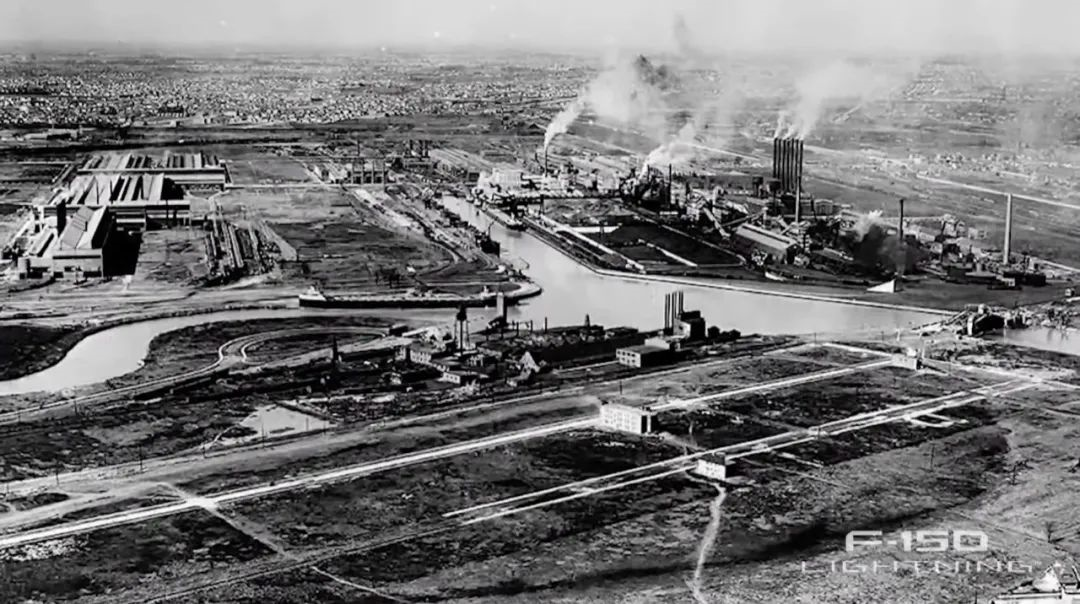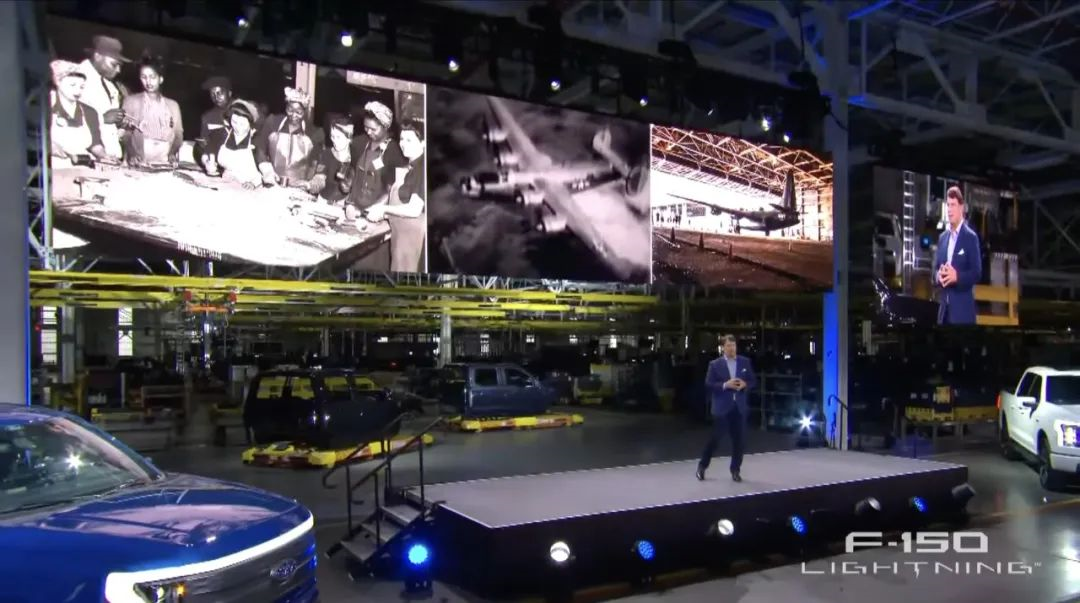AUTHOR: French Fries Fish
In 1908, the first T-model car rolled off the production line at the Ford Piquette plant in Detroit. Ford’s pioneering assembly line process brought a 4000-fold increase in production efficiency, adding the presence of the automobile to the “American Dream” of the last century and making Ford a great car company.

In 2022, Ford announced the official mass production of the F-150 Lightning, its all-electric pickup truck. Bill Ford, the executive chairman of Ford, called this moment the “T-model car” moment, implying that the F-150 Lightning will make Ford great again.

“To do well in a field, the simplest way is to learn from the best in the field,” said my boss, Chang Lao Shi, recently. Coincidentally, it seems that Ford also agrees with this principle.
To be great again in the electric era, the simplest way is to learn from the best electric car manufacturer at present.
Obviously, this best manufacturer is Tesla.
Ford CEO, Jim Farley, once openly stated at an internal Ford meeting that Tesla’s electric cars outperformed all car companies, and Ford should learn from Tesla.
“The factory is my home.”
This learning was reflected at the beginning of the F-150 Lightning launch ceremony.
From the promotional video taken by a shuttle inside the Rouge factory before the official launch, to the huge countdown mixed with lightning effects, to the selection of the Rouge factory as the venue… Ford gave me a feeling similar to Tesla’s Giga Texas Cyber Rodeo. However, I can assure you 100% that Ford is not copying Tesla.

As for why this feeling exists, it is easily explained. A good learner can always accurately balance the scale between “learning” and “copying,” and Ford should be a master of this balance.
Ford’s learning is only limited to the opening part. In the main part, it is completely Ford’s own style.
Compared with Tesla’s “unconventional” approach, Ford’s launch event is full of “political correctness.”The first to appear is a project manager named Megan Gegesky, from the end of the F-150 lightning production line. Megan brings us a heartwarming and memorable story.

Her family immigrated to the United States in 1906, but it was Ford that truly rooted this family in America.
Since the Rouge factory went into operation, Megan’s great-grandfather joined here. Today, their family has been working for Ford at Rouge factory for more than a century. Before her, nine people from their family worked here, and she is the fifth generation to take over this relay work.

“Ford has become part of our blood. For our family, Ford almost means the whole world.”
“Blood” and “world”… For someone like me who is reserved, this speech puts me in a very conflicting state: touching the clear goosebumps on my arms, my objective physiological response tells me that these words may be a bit too emotional. But after hearing her talk about the hundred-year story between her family and Ford, where her family witnessed the birth of modern mass-produced cars and was also a participant in the evolution of modern cars, my subjective thinking tells me that these exaggerated words may be her true feelings.

“Development depends on everyone”
In these true emotions, I can feel something called “heritage”, which is also the empathetic bond between Ford employees and management.
“Megan is the fifth generation of her family to work for Ford, while I am the fourth generation of my family. It is these family inheritances that have created the hundred-year Ford today,” said Bill Ford, the executive chairman of Ford, in his opening remarks.

We often say that the butt determines the brain. This is an especially crude but true saying.
For employees like Megan, the Rouge factory is their family’s memory, but for owners like Bill Ford, the Rouge factory carries the historical imprint of Ford’s development.From Model A, to Mustang, to F150, Rouge factory has produced many classic and best-selling Ford models in the past 45 years, including the best-selling pickup truck in the United States.

The word “best-selling” implies a continuous positive cash flow. Therefore, Bill Ford praised Rouge factory as the “beating heart” of Ford, which not only reflects his emotional attachment to the family business but also his pursuit of practical benefits. This dual reason is enough to make me believe that Bill Ford’s praise for Rouge factory is not just empty talk.

However, with the advent of the new energy era, environmental issues have put Rouge factory on the cutting edge.
As a traditional automobile manufacturing plant, Rouge inevitably has some high pollution and high emissions problems. These issues were not considered problematic decades ago, and even thick smoke and exhaust were seen as positive signals of industrial prosperity.

But in today’s awakened environmental consciousness, especially in a very “politically correct” company like Ford, environmental protection has become a huge problem. Some Ford executives even suggested closing Rouge factory due to the acute environmental issues.
For professional managers, when a project does not bring positive returns to the company or its positive benefits are far outweighed by the negative impact, rational judgment dictates that the project should be cut. This is the reason they suggested to close Rouge. But Bill Ford clearly could not accept cutting out the “heart” of the Ford company.

Three and a half years later, the “greenest vehicle factory in the world” Rouge Electric Vehicle Center officially started production. Bill Ford has repeatedly thanked the employees who made outstanding contributions to the Rouge transformation. It was their efforts that preserved the shining star in Bill Ford’s heart. Perhaps it is because of this, that the scene of the F-150 Lightning production ceremony was inaugurated by Ford’s loyal employees.
"Once upon a time, Ford was the first company to make cars available to everyone; now, we will also be the first to make pure electric pickups available to everyone," said Bill Ford.
Although the F-150 Lightning has taken so long to enter mass production, Ford is still the first company capable of delivering pure electric pickups on a large scale. In other words, although some brands delivered earlier than Ford, they were all small-scale operations. For real large-scale deliveries, you still have to watch Ford's performance.

This makes me curious: How big is Ford's definition of "large-scale delivery"? The supercharging station will also continue to pay attention to this.
## "Ford Builds What the People Need"
It has to be said that Ford has fully embodied its "feelings" in this mass production ceremony.
Even at the event to introduce the specific performance parameters of the F-150 Lightning, Ford CEO Jim Farley didn't forget to stir up some "sentimentality."
From producing the Model T on a large scale, turning America into a country on wheels, to responding to national needs during World War II by producing B-24 bombers, to mass-producing ventilators during the COVID-19 pandemic, in Farley's speech, Ford has become a "Ford builds what the people need" national enterprise.

As we all know, the American people love pickups, so in the age of new energy, it is natural for the American people to want a pure electric pickup. This is also the reason why Ford launched the F-150 Lightning.
As for the F-150 Lightning itself, I don't know if it's because Ford knows the car has been released for too long and its performance is no longer a secret, or if straightforward examples are closer to the pickup truck users' understanding, but Farley did not stick to F-150 Lightning's specific parameters. Instead, he used many examples that are more closely related to real-world usage to explain the characteristics of the F-150 Lightning.

F-150 Lightning has an external power supply capacity of nearly 10kW. Although 10kW is a performance index that is understood at a glance for scientists and engineers, it may not be very convincing for the general public.
Therefore, Farley describes the external power supply capacity of the F-150 Lightning like this:
“With a single charge, the F-150 Lightning can power 20,000 pieces of plywood for your circular saw, provide enough power for a romantic outdoor wedding in Yosemite, supply your home with electricity during a power outage, and even charge your friend’s Tesla…”
Cheeky Farley also couldn’t resist teasing Tesla.
I am not very familiar with the real-life scenarios of American pickup truck users. If the scenarios mentioned by Farley really are situations that users encounter in their daily lives or urgent pain points, then such descriptions are more able to meet the needs of consumers. At least in my opinion, such descriptions are more vivid and interesting than memorizing parameters, and I suggest that domestic competitors can learn from them.
Returning to the topic of Ford learning from Tesla, I mentioned earlier that Ford can balance the scale between “learning” and “copying” well. Specifically, in the press conference of the F-150 Lightning’s mass production release, Ford took a completely different approach from Tesla in terms of content.
They emphasized the importance of emotions and feelings infinitely, while also placing topics such as the UAW American auto union, which Tesla would never mention, in an extremely important position, with a special sense of “solidarity of the working people”.
After this move, at least in my opinion, Ford has established the ICON of the Rouge factory, just like Tesla would establish Giga Berlin and Giga Texas as a brand ICON. That is, the path is completely different, but the result tends to be consistent. This kind of feeling is like an engineer avoiding existing patents and taking another path to achieve the same effect, which is also a commendable innovation.However, from the user’s perspective, what they care most about is the product itself. As for the product launch, it is only a finishing touch. After all, Ford is a car manufacturing company, not an event planning and execution company.
As for the F-150 Lightning itself, I am actually very curious why Americans are so passionate about pickup trucks and similar models. But without experiencing it, I have no say in the matter. I am especially looking forward to experiencing the unique charm of the F-150 Lightning on the vast plains of China.
This feeling is just like my genuine and urgent anticipation for the early end of the pandemic.
This article is a translation by ChatGPT of a Chinese report from 42HOW. If you have any questions about it, please email bd@42how.com.
